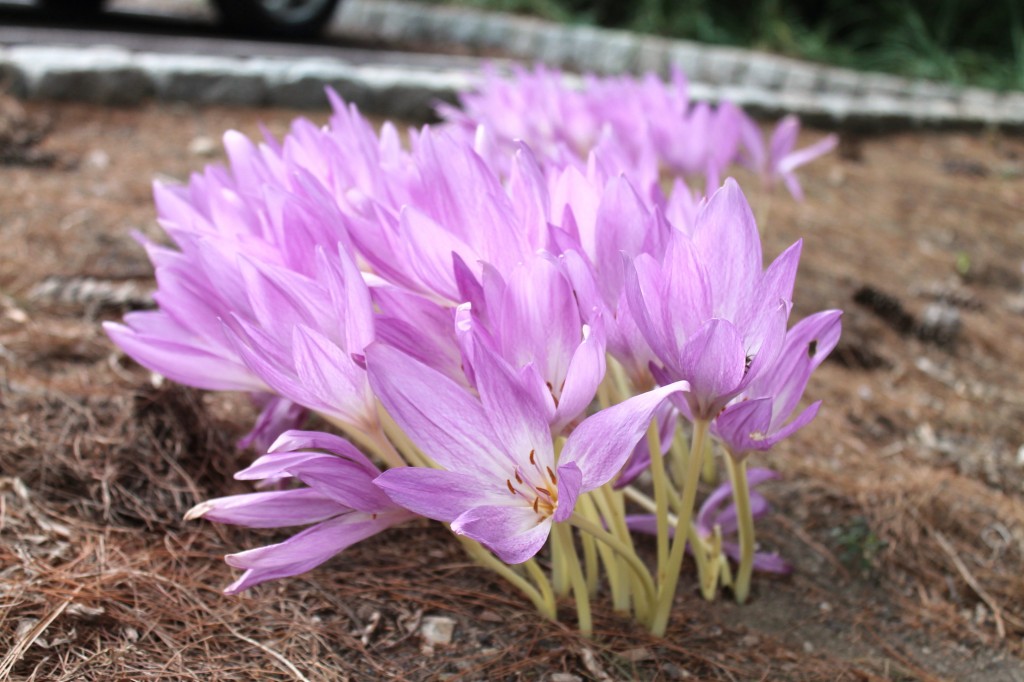

autumnale as the main ingredient and successfully used it to treat patients with gout, that the potential medicinal virtues of the plant started to spark the interest of the European medical community. But it was not until 1780, when Nicolas Husson, an officer in the French army, introduced a medicinal water that contained an infusion of C. The plant was almost absent in early European medical writings until Anton Freiherr von Störck (1731–1803), a physician in Vienna, Austria, wrote a book about the usefulness of autumn crocus for the treatment of edema. 12th century) and Ibn al-Baitar (1197–1248), who treated the name hermodactyl as a synonym for the Arab name surugen, which Ibn al-Baitar described as “similar to the saffron, has leaves like the onion, a stem one span long, and a white root with a red cover, the root being soft, sweet, and toxic as mushrooms.” 9 9,10 This is supported by the writings of Arab physicians, such as Serapion the Younger (ca. Since he did not provide any botanical descriptions, the identity of hermodactyl is debatable, but many scholars believe that it was a Colchicum species. 525–605) also noted the benefits of a plant known to him as hermodactyl, for the treatment of gout, an inflammatory condition caused by the crystallization of monosodium urate in and around joints. However, the Greek physician Alexander of Tralles (ca.

He wrote, “when eaten, it has a fatal effect by choking, as is with mushrooms.” Ingestion of small amounts (less than five grams) of autumn crocus, of which all parts contain colchicine, 7 can cause gastrointestinal symptoms with diarrhea and loss of fluids, followed by life-threatening complications (e.g., heart failure, arrhythmias, renal failure, hepatic injury, respiratory distress, impaired blood clotting) and possibly death. 40–90) describes a plant named ephemeron, also referred to as colchicon, which flowers in fall and has flowers like a crocus ( Crocus spp., Iridaceae). In his De Materia Medica, Greek physician, pharmacologist, and botanist Pedanius Dioscorides (ca. The autumn crocus has been known for centuries, but many older medical texts mainly mention its toxicity. Naturalized populations have been found as far north as southern Scandinavia. It produces flowers in late fall in fertile meadows and pastures in Europe, from southeastern Ireland to central Bulgaria, and from northern Greece to central Germany. Like the movie’s heroine, the autumn crocus is also a late bloomer. However, the new boutique with risqué apparel made by the octogenarian does not please everyone in the small rural village where Martha lives, especially not her son, the village priest, and the president of the local conservative political party, who consider such a store morally objectionable and an eyesore for the quaint little village. Before her marriage, Martha had been a seamstress for a lingerie company, and for many years had been dreaming of returning to her craft.

#AUTUMN CROCUS MOVIE#
The 2006 Swiss movie Late Bloomers (originally titled die Herbstzeitlosen, the German name of the autumn crocus) tells the story of 80-year-old Martha, who, after her longtime husband dies, starts a business making underwear. 4-6 Nevertheless, the results seem promising and reinforce that plant constituents can be important sources of medications. 2,3 While the authors of the study reported this as a major breakthrough, many scientists pointed to the lack of statistical significance between the colchicine and placebo groups in the primary endpoints of the study and emphasized the need for more data. In January 2021, several media reports put a spotlight on colchicine, an alkaloid from the autumn crocus ( Colchicum autumnale, Colchicaceae), after a randomized, double-blind clinical study with 4,488 COVID-19 patients 1 showed a reduction in hospitalization and death rates in the colchicine group, according to the preprint conclusion.


 0 kommentar(er)
0 kommentar(er)
